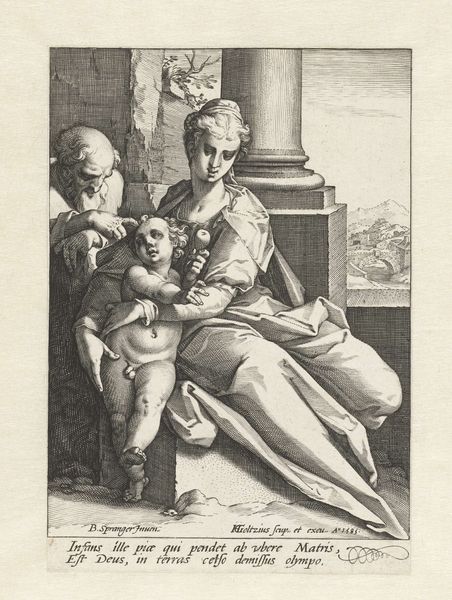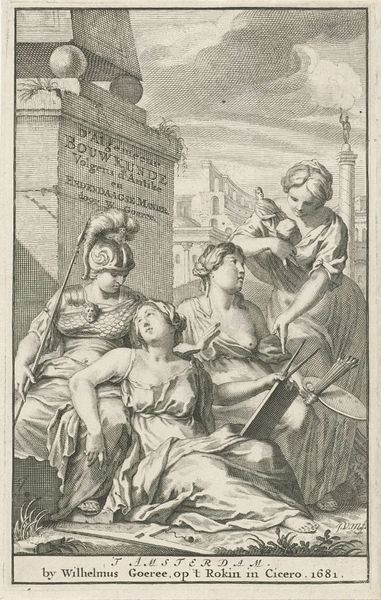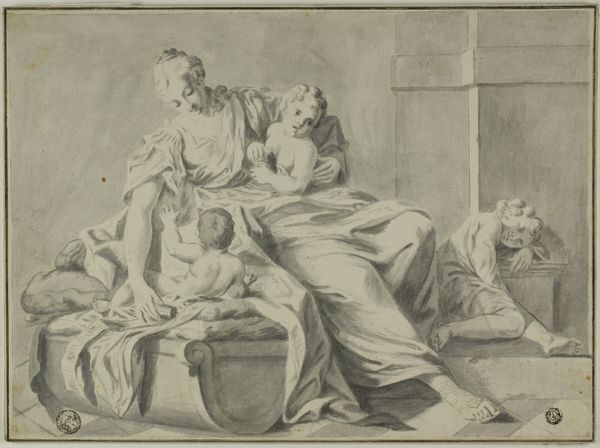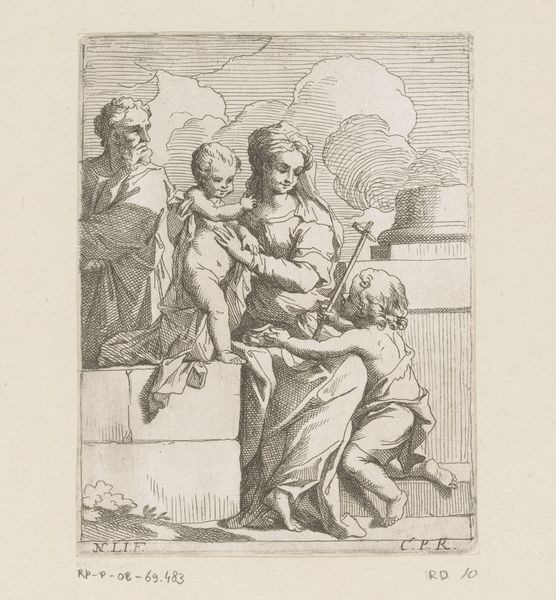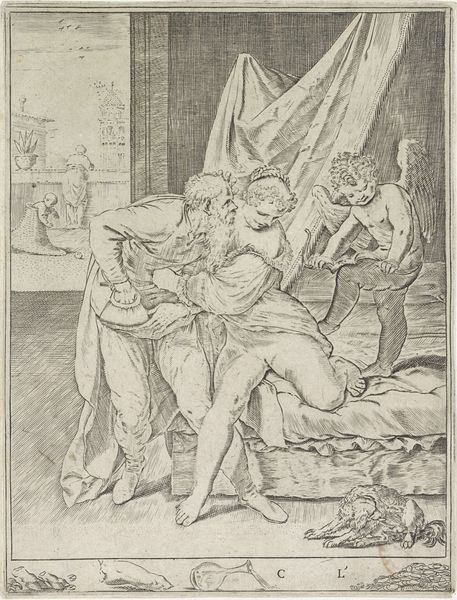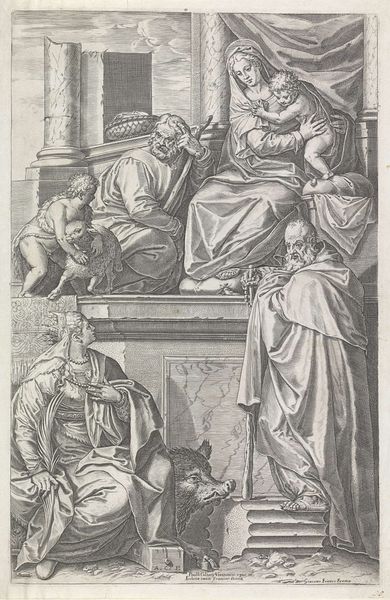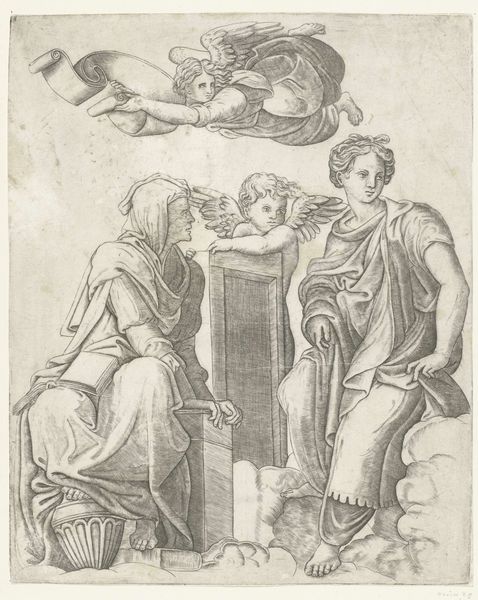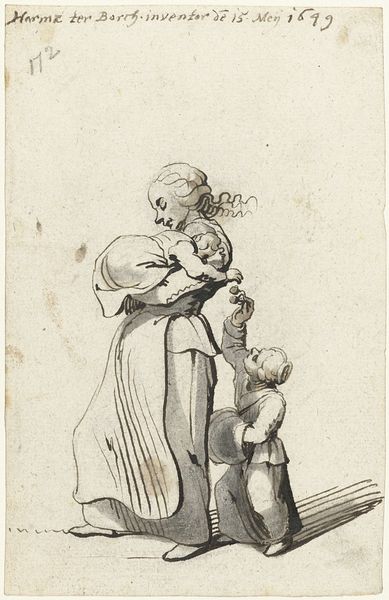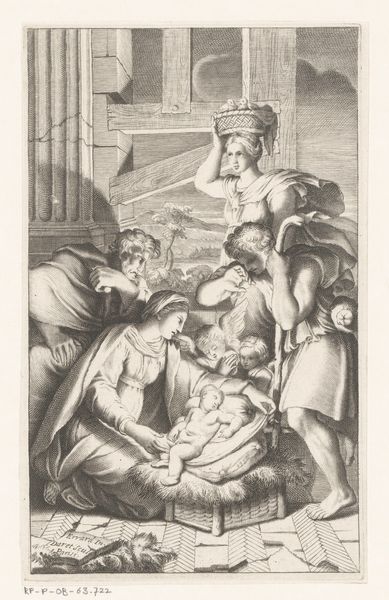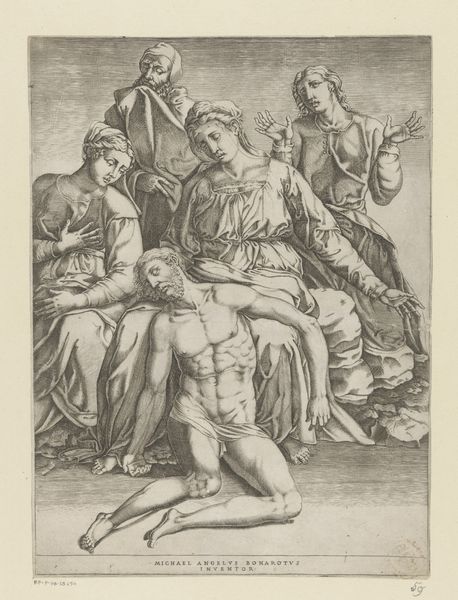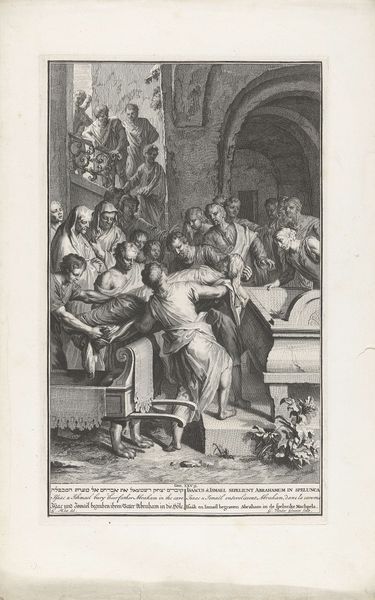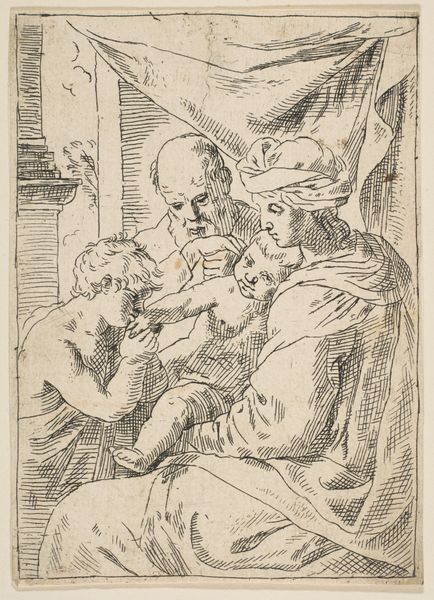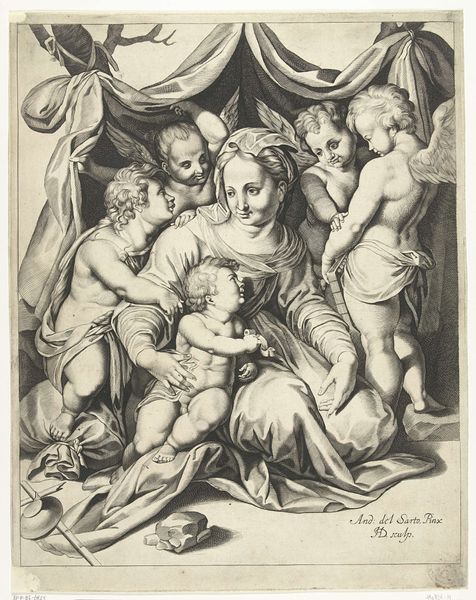
Dimensions: height 175 mm, width 125 mm
Copyright: Rijks Museum: Open Domain
Curator: Looking at this engraving, dating from 1585, by Hendrick Goltzius, titled “Holy Family before a Column,” I’m immediately struck by its intense formal quality, the way the composition is organized around these architectural elements. The textures and lines really jump out at me, especially when considering its themes about devotion and hierarchy. Editor: My initial impression is one of solemnity. Despite the intimate subject matter, there's a formality that feels almost mournful. The cool tonality reinforces a feeling of seriousness. I’m thinking about the role the family plays here as representatives of larger cultural values in flux in the late 16th century. Curator: That sense of melancholy could also stem from the visual language used here, drawing on mannerist aesthetics. Goltzius exaggerates the proportions slightly; the figures are idealized, almost ethereal, placed before this imposing architectural backdrop. It adds to this sensation that the human element is just one facet in a broader cosmos of meanings, particularly because religious doctrine was a cornerstone of most early societies. Editor: Right. That architectural backdrop…it reads like a theatrical set, highlighting the staging of familial roles. A pillar becomes the emblem of social structure, a visual metonym linking domestic life to larger systems of power and authority. Is Goltzius critiquing the family’s power structure, especially as gender comes into play here? I am wondering who is propping up whom… Curator: Potentially. However, that's the brilliant ambiguity of Mannerism: this etching simultaneously critiques and idealizes traditional roles. Consider the symbols: Mary holding the fruit, suggestive of redemption, Joseph gazing down with reverence at his son and heir. And Jesus, that small child as a bearer of all this cultural inheritance. They are all so purposefully arranged. The message then is less about dismantling, more about re-imagining an icon. Editor: The re-imagining comes with risks and new interpretations, and the emotional weight seems to capture this feeling well. The stark composition against the softness of the figures evokes not only the familiar harmony but an impending unknown too, which creates an intriguing tension. Curator: I agree. Perhaps this artwork isn't just a static representation but a starting point for dialogue about continuity, change, and how our shared visual language helps express those profound and ongoing transitions. Editor: Ultimately, a testament to how visual motifs embedded in our art and historical record prompt new ways of thinking about societal relationships.
Comments
No comments
Be the first to comment and join the conversation on the ultimate creative platform.
